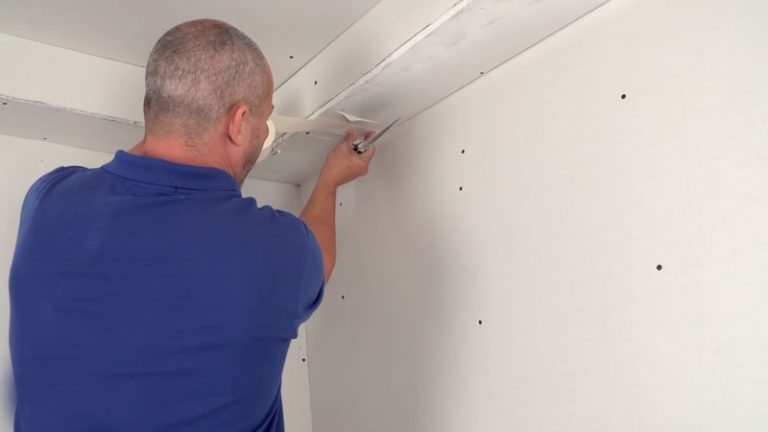Johns Manville vs Owens Corning: The #1 Insulation Mistake That Costs Homeowners a Fortune
Choosing the right insulation for your home feels like a monumental decision. You’re standing at a crossroads between two titans of the industry: Johns Manville and Owens Corning. One is known as a professional-grade choice, while the other is backed by the iconic Pink Panther and widespread availability. The fear of making the wrong choice is real, as it can lead to decades of high energy bills, uncomfortable rooms, and nagging buyer’s remorse.
This decision paralysis is a common problem for homeowners. You want the best performance and value, but the technical jargon and subtle differences between brands can be overwhelming. A mistake here isn’t just a minor inconvenience; it’s a long-term investment in your home’s comfort and financial efficiency that you need to get right the first time.
You'll Learn About
Why Your Insulation Choice is More Critical Than You Think
The insulation you install is a silent workhorse. It operates behind your walls and in your attic, tirelessly protecting your home from the elements. A superior insulation job directly translates to lower heating and cooling costs, a more consistent indoor temperature, and even a quieter home by dampening outside noise.
Conversely, choosing subpar material or, more importantly, settling for a poor installation can negate all potential benefits. It leads to energy leakage, drafts, and forces your HVAC system to work overtime, shortening its lifespan and inflating your utility bills. The stakes are simply too high to leave this decision to chance or a flip of a coin.
Meet the Contenders: A Legacy of Innovation
Both Johns Manville and Owens Corning are American companies with long, storied histories in the building materials industry. They are the top two names that immediately come to mind for fiberglass insulation, and for good reason. Each has pioneered technologies and set industry standards for decades.
Johns Manville: The Industrial & Commercial Powerhouse
Often considered the professional’s choice, Johns Manville (JM) has built a reputation for high-quality, premium products. With a history stretching back over 160 years, they have a deep portfolio that includes fiberglass, mineral wool, and spray foam insulation. Many contractors appreciate the consistency and performance of JM products, often highlighting their formaldehyde-free binders which can result in better indoor air quality.
Owens Corning: The Iconic Pink Panther
Owens Corning is arguably one of the most recognized brands in the building materials space, thanks in large part to their trademarked PINK® fiberglass insulation and the Pink Panther mascot. They have a massive presence in the residential market and are widely available at major home improvement stores, making them a go-to for DIYers and contractors alike. Owens Corning emphasizes a “total energy protection” system, offering a wide range of products designed to work together.
The Ultimate Showdown: Johns Manville vs. Owens Corning
When you put the products from these two giants side-by-side, the differences can seem subtle. Both produce high-quality fiberglass batts, rolls, and blown-in insulation that perform exceptionally well when installed correctly. The real distinctions lie in the nuances of their product lines, handling characteristics, and specific technologies.
Fiberglass Batt Insulation: The Head-to-Head Comparison
For most homeowners, the primary choice will be fiberglass batt insulation for walls, floors, and attics. Here’s how the two brands stack up in the most critical areas.
Performance (R-Value): R-value measures an insulation’s ability to resist heat flow. For comparable products, both Johns Manville and Owens Corning offer nearly identical R-values. An R-13 batt from one will perform thermally just like an R-13 batt from the other. The idea that one brand is inherently “warmer” than another is largely a myth; performance is dictated by the R-value and the quality of the installation.
Product Composition & Feel: One of the most talked-about differences is the “itch” factor. Many installers and DIYers report that Johns Manville insulation feels softer and is less irritating to the skin. This is often attributed to its bio-based, formaldehyde-free binder. While Owens Corning also produces safe, formaldehyde-free insulation, user feedback frequently gives JM the edge in handling comfort.
Soundproofing (STC Ratings): Both companies offer specific product lines for sound control, which are denser than standard thermal batts. These are excellent for interior walls around bathrooms, laundry rooms, and home theaters. Performance is very similar, so the choice often comes down to price and availability.
Moisture Resistance: Controlling moisture is critical, especially in areas like bathrooms. That’s why understanding whether to use faced or unfaced insulation behind a shower is so important. Both brands offer kraft-faced products that act as a vapor retarder, and the choice depends on your climate zone and local building codes.
| Feature | Johns Manville | Owens Corning |
|---|---|---|
| Primary Market | Professional / Commercial Focus | Residential / DIY Focus |
| R-Value per Inch | Comparable to OC (e.g., R-13, R-19) | Comparable to JM (e.g., R-13, R-19) |
| Handling Comfort | Often reported as less itchy and softer | Standard fiberglass feel; can cause skin irritation |
| Binder | Formaldehyde-free bio-based binder | Formaldehyde-free; PureFiber® Technology |
| Availability | Mainly through building supply distributors | Widely available at stores like Home Depot and Lowe’s |
| Unique Feature | Reputation for premium quality and consistency | Strong brand recognition (Pink Panther®), DIY-friendly |
Beyond Batts: Exploring Blown-In and Spray Foam Options
For attics and complex wall cavities, blown-in insulation is a fantastic option that ensures a seamless, gap-free blanket of protection. Both JM’s Climate Pro® and Owens Corning’s AttiCat® systems are popular choices. The performance is again very similar, with the primary difference being the installation equipment and the color of the material.
When it comes to alternative insulation types, it’s worth exploring all your options. For instance, some homeowners read USA Premium Foam Insulation reviews when considering advanced solutions. Both JM and OC have ventured into spray foam, recognizing its superior air-sealing capabilities, though this is a job strictly for certified professionals.
The Cost Factor: Is There a Clear Winner?
On a square-foot basis, Owens Corning insulation is often slightly more budget-friendly and more readily available in retail stores, which can reduce costs for smaller projects. Johns Manville is typically sold through professional distributors and may come at a slight premium. However, for a full home installation, the cost difference for the material itself is often negligible compared to the cost of labor.
The Deciding Factor Few People Consider: Installation Quality
This is the most critical point: The best insulation brand in the world will fail if it’s installed improperly. A flawless installation of Brand A will always outperform a sloppy installation of Brand B. This is the number one mistake homeowners make—focusing too much on the brand name and not enough on the installer.
Common installation errors like compressing the batts, leaving gaps around outlets and wiring, or failing to create a continuous thermal barrier can reduce the effective R-value by 30% or more. These gaps act as thermal bridges, allowing heat to flow freely and undermining the entire purpose of insulating. It is crucial to hire a reputable, experienced contractor who understands the science behind a proper install.

Making the Final Decision: Which Brand is Right for Your Home?
With performance being so similar, the choice between Johns Manville and Owens Corning often comes down to logistical and preferential factors. Just as you would investigate if Casainc is a good brand before buying furniture, you should weigh the specific pros of each insulation manufacturer for your project.
Choose Johns Manville If…
You are hiring a professional contractor who prefers and recommends it. Their experience with the product’s consistency and handling can lead to a better, faster installation. You may also prefer it if you are sensitive to fiberglass and want the product generally considered to be less itchy.
Choose Owens Corning If…
You are a DIYer who needs easy access to materials from a local big-box store. The strong brand recognition and extensive online resources can also provide peace of mind. If your contractor is an Owens Corning Preferred Contractor, you can be confident they are well-trained in installing their specific products.
Conclusion: The Verdict on Johns Manville vs. Owens Corning
After a deep dive into the products, performance, and reputations of both Johns Manville and Owens Corning, the conclusion is clear: you can’t go wrong with either brand. Both are industry leaders that produce exceptional insulation products that will improve your home’s energy efficiency and comfort for decades to come.
The real winner in the “Johns Manville vs. Owens Corning” debate is not a brand, but a principle: quality installation is paramount. Your focus should shift from picking a “better” brand to finding the best possible installer. Get multiple quotes, ask contractors which brand they prefer and why, and inspect their previous work. The ultimate performance of your home’s thermal envelope rests in the hands of the person installing it, not in the color of the fiberglass.


